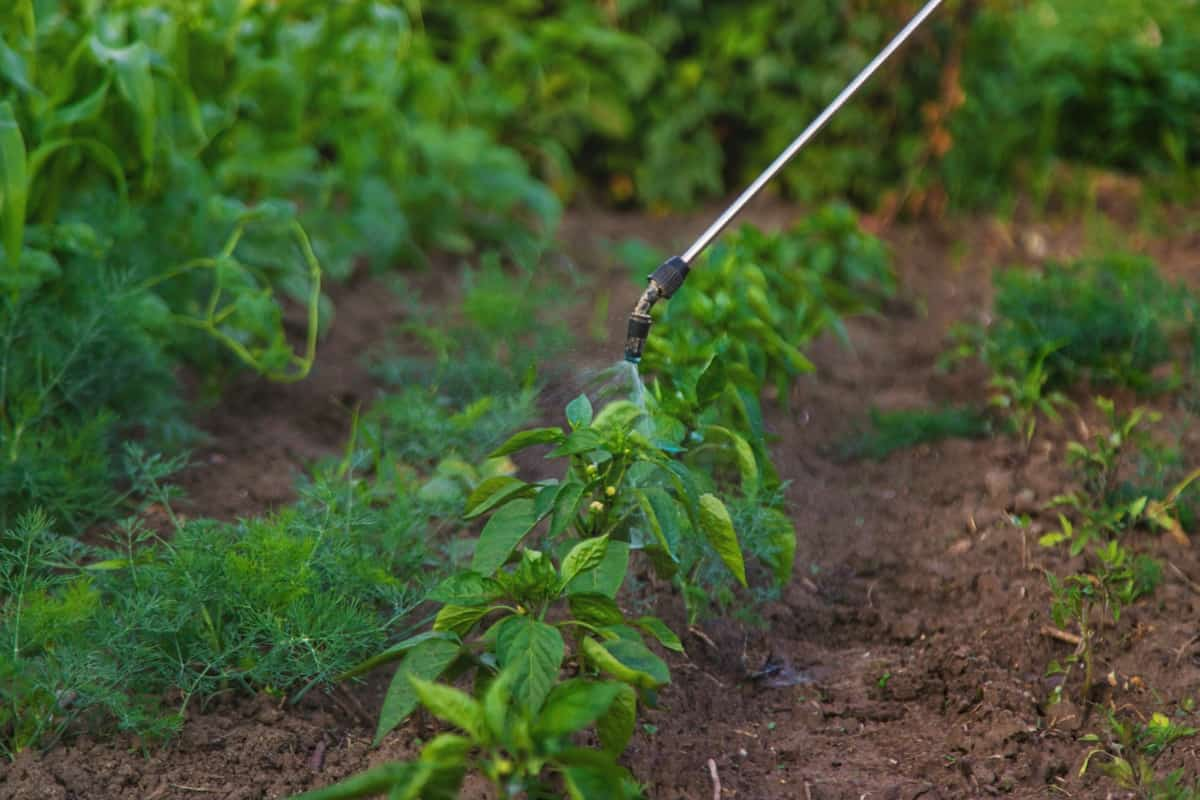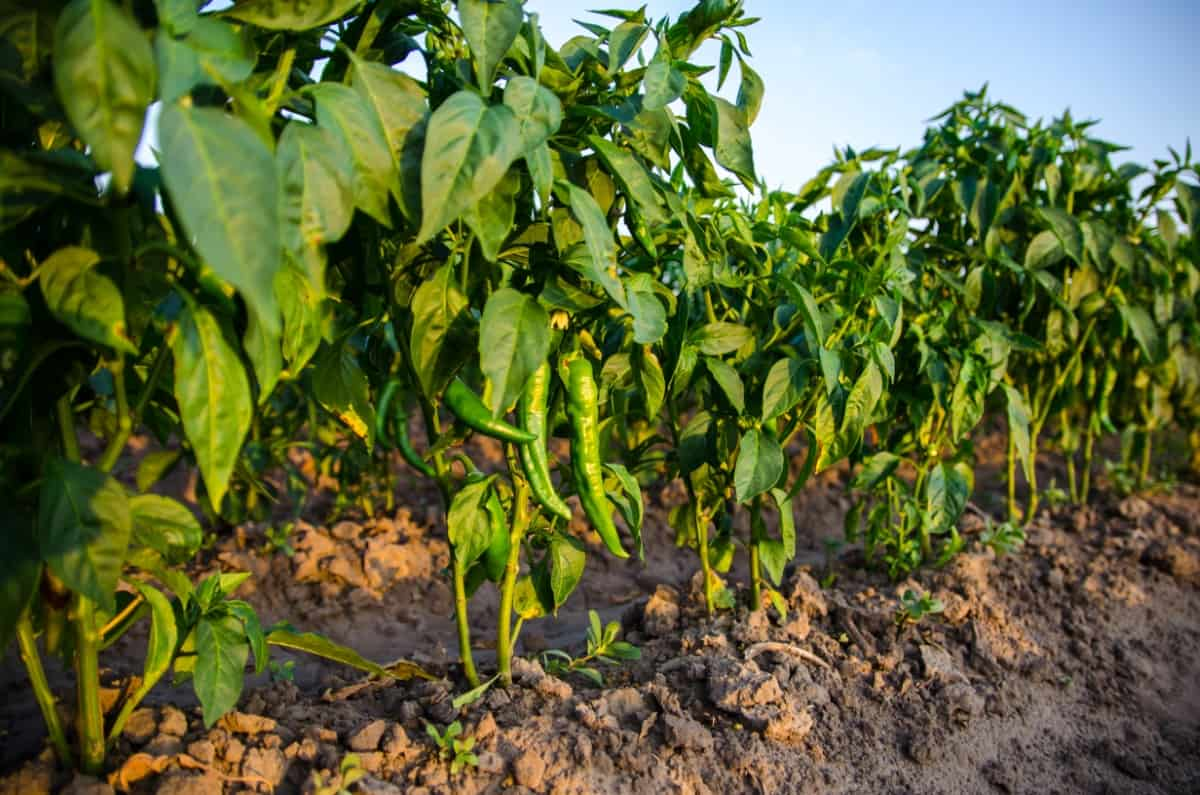Are you battling black thrips in your chili plants? Discover effective treatment options to combat this pest. From organic remedies like neem oil to natural pest control methods, there are various solutions available. Consider implementing Integrated Pest Management (IPM) techniques to tackle thrips infestation in your chili cultivation. Look for resistant chili varieties to minimize damage caused by thrips.

Additionally, it explores chemical treatments and effective insecticides for more aggressive control. With a combination of organic, natural, and chemical approaches, you can effectively manage black thrips in your chili plants. Explore homemade spray recipes for a DIY solution to this common problem.
Introduction to Black Thrips in Chilli Plants
Overview of the Pest
Black thrips, scientifically known as Caliothrips spp., are small, slender insects with fringed wings belonging to the Thripidae family. These pests thrive in warm, dry climates, making chili plants susceptible to infestation, especially in hot regions. Chilli thrips, native to Asia, are small, slender thrips with piercing-sucking mouthparts. They can be black, brown, yellow, or white and are the most common and damaging species, affecting chili plants globally.
Signs and Symptoms of Infestation
Black thrips, which feed on chilli plants, cause symptoms such as silvering, curling, scarring, premature dropping, reduced size and quality of fruits due to nutrient loss, premature abortion of buds and flowers, and transmission of viral diseases like TSWV or ChiVMV due to vectoring. These symptoms result from the removal of chlorophyll, saliva injection, damage to buds and flowers, and the transmission of viral diseases like TSWV or ChiVMV.
Understanding Thrips and Their Impact on Chilli Cultivation
Thrips are piercing-sucking insects that feed on plant tissues, causing significant damage to chili plants. Their feeding activity weakens plant vitality, reduces fruit quality, and can lead to yield loss if managed.
Life Cycle of Black Thrips
The life cycle of black thrips comprises egg, nymph, and adult stages. Eggs are laid within plant tissues, and nymphs emerge to feed and develop into adults. This cycle repeats, with multiple generations occurring throughout the growing season.
| Temperature (°C) | Egg Stage Duration | Nymph Stage Duration | Pupa Stage Duration | Adult Stage Duration |
| 15°C | 13 days | 11 days | 6 days | 30 days |
| 20°C | 7 days | 6 days | 4 days | 20 days |
| 25°C | 4 days | 4 days | 3 days | 15 days |
| 30°C | 3 days | 3 days | 2 days | 10 days |
Damage Caused to Chilli Plants
Thrips damage manifests as distorted leaves, stunted growth, and reduced fruit quality. Severe infestations cause premature leaf drop, decreased photosynthetic capacity, and, ultimately, diminished yields. Black thrips can reduce chili yield by up to 50% due to fruit scarring and dropping.
Black thrips damage chili plants by eating their sap, causing symptoms like silvering, curling, scarring, premature dropping, reduced fruit size and quality, and the transmission of viral diseases like TSWV or ChiVMV. They pierce plant tissue with their mouthparts, causing damage to leaves, buds, flowers, and fruits. Symptoms include premature dropping, reduced fruit size, and the transmission of viral diseases.
Neem Oil Application
Neem oil, derived from the neem tree (Azadirachta indica), offers organic thrips control. Dilute neem oil in water and apply evenly to chili plants. The oil disrupts thrips feeding and reproduction, reducing population levels.
Preparation and Application Method
Mix neem oil according to the label instructions. Use a sprayer to coat both upper and lower leaf surfaces, ensuring thorough coverage. Apply in the early morning or late afternoon for optimal efficacy.
Frequency and Timing of Application
Apply neem oil every 7-10 days or as needed, especially during periods of high thrips activity. Begin treatments preventatively before infestations become severe.
In case you missed it: Top 10 Viral Diseases in Chilli: Symptoms, Diagnosis, How to Control and Treat Them

Biological Control Agents
Introducing predatory insects like lacewings, ladybugs, and predatory mites can help suppress thrips populations. These beneficial organisms prey on thrips, reducing their numbers naturally.
Using Entomopathogenic Fungi
Entomopathogenic fungi, such as Beauveria bassiana, are natural enemies of thrips. Apply fungal spores to chili plants, where they infect and kill thrips, providing long-term control.
Natural Remedies for Thrips Management
Garlic and Chilli Spray
Create a homemade spray by blending garlic and chili peppers with water. Strain the mixture and apply it to chili plants to repel thrips. Reapply after rainfall or as needed.
How to Make and Apply
Crush garlic cloves and chili peppers, then steep in water overnight. Strain the liquid and dilute before spraying onto chili plants. Apply evenly, focusing on areas prone to thrips infestation.
Reflective Mulches
Reflective mulches, such as aluminum foil or silver plastic, deter thrips by disorienting them with reflective light. Install mulches around chili plants to reduce thrips landing and feeding.
Installation and Effectiveness
Place reflective mulches around the base of chili plants, ensuring coverage of soil surfaces. Monitor for thrips activity and adjust mulch placement as needed. Reflective mulches offer sustainable and eco-friendly thrips control.
Chemical Control Strategies
Black thrips are a significant pest in chilli crops, causing damage to leaves, flowers, and fruits. They transmit viruses that affect plant health and yield. Farmers can control them using cultural, biological, or chemical methods. Cultural methods involve removing infected plants, using resistant varieties, and rotating crops. Biological methods introduce natural enemies, while chemical methods use insecticides. Effective insecticides include endosulfan, fenpropathrin, and chlorpyrifos, but should be used cautiously.
Fenpropathrin is a synthetic pyrethroid insecticide that targets sucking and chewing pests, including black thrips, with a long residual effect. Applied as a foliar spray or soil drench, depending on crop stage and infestation level. It is compatible with most insecticides and fungicides but should not be mixed with alkaline substances. Fenpropathrin is safe for controlling black thrips in chilli crops, but should be used cautiously and away from children, animals, and water sources.
Integrated Pest Management (IPM)
Combining Chemical and Non-Chemical Methods
Integrated Pest Management (IPM) integrates various pest control tactics to manage thrips effectively. By combining cultural practices, biological controls, and selective insecticides, growers can achieve sustainable thrips management while minimizing environmental impact.
Cultural Practices to Prevent Thrips Infestation
Crop Rotation
Rotate chili crops with non-host plants to disrupt thrips’ life cycles and reduce the buildup of pest populations. Incorporate legumes or grasses into crop rotations to break thrips infestation cycles.
Sanitation and Weed Management
Maintain clean growing areas by removing weeds and plant debris, which can harbor thrips and their eggs. Regularly remove and destroy infested plant material to prevent thrips from spreading to healthy plants.
In case you missed it: How to Prevent Chilli Fruit Rot Naturally: How to Control with Natural and Organic Treatment

Monitoring and Early Detection
Implement proactive monitoring techniques to detect thrips infestations early. Use sticky traps placed throughout the chili field to capture adult thrips and monitor population levels.
Regular Inspection Techniques
Regularly inspect chili plants for signs of thrips damage, including leaf discoloration and distorted growth. Early detection for timely intervention to prevent population outbreaks.
Use of Sticky Traps
Place yellow or blue sticky traps near chili plants to attract and trap adult thrips. Monitor traps weekly and replace them as needed to maintain effectiveness.
Soil Health and Plant Resistance
Enhancing Soil Organic Matter
Improve soil health and plant resilience by incorporating organic matter into chili fields. Well-aerated, nutrient-rich soils promote vigorous plant growth and increase resistance to thrips infestation.
Choosing Resistant Varieties
Choosing resistant varieties of chilli involves selecting varieties with natural resistance to thrips or viral diseases. Examples include Pusa Jwala, a high-yielding variety with resistance to thrips and leaf curl virus; Arka Lohit, a hybrid variety with resistance to thrips and mosaic virus; and Kashi Anmol, a large, round variety with resistance to these diseases. These varieties are suitable for fresh or processed consumption.
Safety Measures and Environmental Considerations
To control black thrips in chilli plants, it’s crucial to follow safety measures and environmental considerations. Protect beneficial insects by avoiding broad-spectrum insecticides and spraying them in the evening or early morning and during flowering. Minimize chemical use and pollution by using insecticides only when necessary, following label instructions, using recommended doses and frequency, and avoiding over-spraying or drift. Dispose of empty containers safely and avoid contamination of water sources or food crops.
In case you missed it: Organic King Chilli Farming: A Comprehensive Cultivation Guide

Conclusion
Effective treatment for black thrips in chili plants combines organic, natural, and chemical control methods. Homemade recipes such as neem oil spray and garlic-chili concoctions offer sustainable options, while selective insecticides provide targeted intervention when necessary.
- Feed Your Flock for Less: Top 10 Tips to Save on Chicken Feed
- Ultimate Guide to Ossabaw Island Hog: Breeding, Raising, Diet, and Care
- Hatching Answers: The Top 10 Reasons Your Chickens Aren’t Laying Eggs
- Eggs and Economics: Breaking Down the Cost of Raising Backyard Chickens
- Defend Your Greens: Proven Methods to Keep Iguanas Out of Your Garden
- Ultimate Guide to Cinnamon Queen Chicken: A Comprehensive Guide for Beginners
- Ultimate Guide to California Tan Chicken: Breeding, Raising, Diet, Egg-Production and Care
- Ultimate Guide to Marsh Daisy Chicken: Breeding, Raising, Diet, and Care
- 10 Types of Chicken Farming Businesses You Can Start for Profits